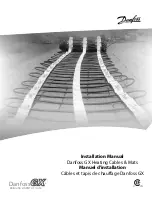
160/200/160P/200P AC/DC Series Machine
www.longevity-inc.com
STICK/ARC Welding
Stick Welding
(Also known as MMA-Manual Metal Arc or Shielded Metal Arc Welding-SMAW)
Connect the Stick torch to the
-
terminal and Torch Control receptacles.
Connect the ground clamp to the
+
terminal and clamp the metal to be welded. Reverse the torch and ground
connections for DCEP (Direct Current Electrode Positive).
DC Stick
- Select Stick, DC, desired amps using Base cur knob
1. Insert electrode into electrode holder. Position the electrode for the most comfortable position so that the
electrode can be held directly over the work piece with a slight angle.
2. Set Amperage to the recommended amperage by the electrode manufacturer. Strike an arc by swiping it briskly
across the work piece in the same manner as one would strike a match. Alternatively, you may strike an arc with
firm tapping motion against the work piece. Either method is acceptable. An arc should initiate. Continue to keep
the arc going by holding the electrode off the work piece no more than the electrode width.
3. Continue the arc by feeding the electrode into the weld puddle while moving the electrode forward. This will
take some coordination, but will be fairly easy to do after practice. Do not allow the arc to become too long,
because air and slag can become entrapped in the metal. The sound of a proper arc will be similar to a gentle
frying sound. A long arc will emit a humming sound. An arc that is too short may be extinguished and the
electrode may stick to the work piece. If the electrode sticks, immediately release the electrode from the electrode
holder and break the electrode loose by hand. If the flux breaks off, simply trim off the excess rod until flux and
bare metal meet. A welding rod must have flux to shield the weld from the atmosphere or the weld will fail.
4. Use the Basic Current control to change arc qualities. Adjust the amperage according to the recommendations
of the electrode (welding rod) manufacturer for the type and size of the electrode used. When welding in the AC
mode the AC Frequency control will affect how crisp the arc is, whether it is smooth and buttery or deeply
penetrating. Use it to suit the desired weld finish. Experimentation will be required to find the optimal setting
desired. It is an excellent tool for out of position welding.
5. Electrode selection. Electrodes are usually given performance and characteristic ratings using a system of
letters and numbers determined by the American Welding Society (AWS). The rating system includes the
minimum tensile strength of the finished weld, the weld position (flat, vertical, horizontal, or overhead or a
combination of two or more positions) and the flux type. Additional information may be given. Each
manufacturer has their individual name and terminology as well. As there is no general recommendation that can
be made about a particular electrode selection, except for practice welds, a electrode designated by the AWS as E
6011, E 6013, E 7014, or E 7018 may be used, each having its own distinct features and purpose. These are
among the most common electrodes used in the industry and are not difficult to find. E 6011 electrodes are not as
smooth running as some of the other electrodes, but offer the advantage of being able to weld on rusty metal and
contaminated surfaces. It is widely used and requires very little skill to begin using. This is not a particular








































